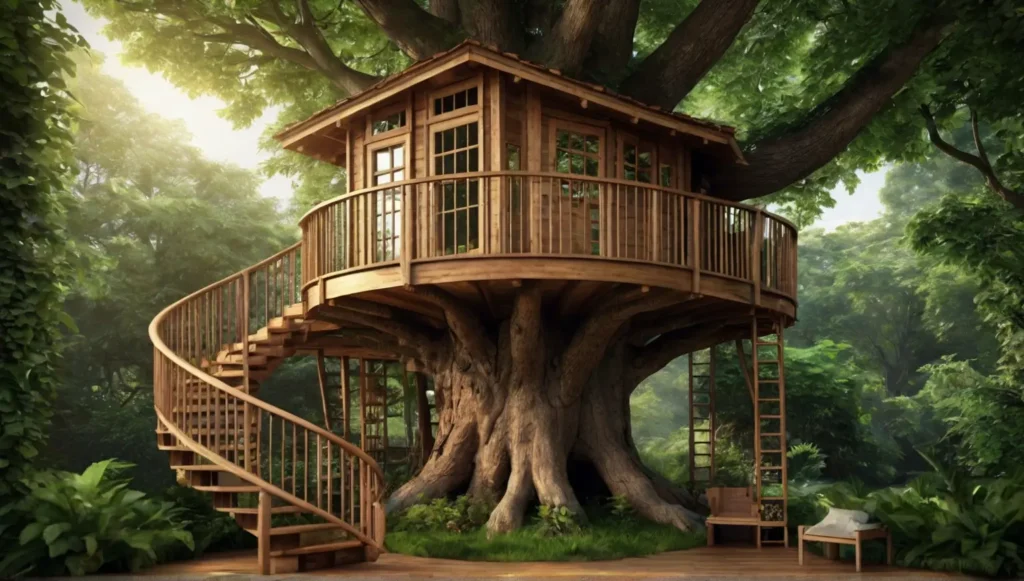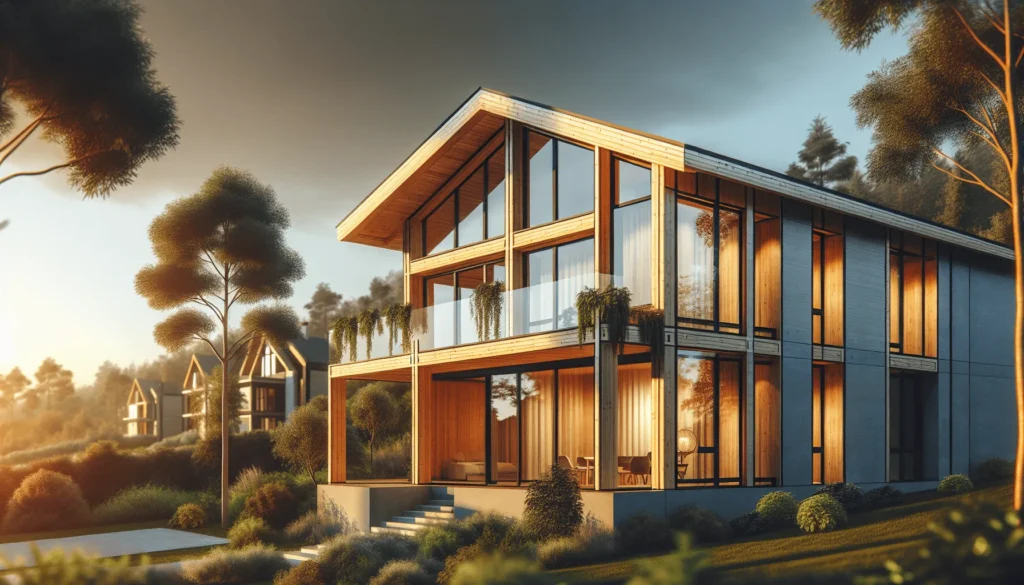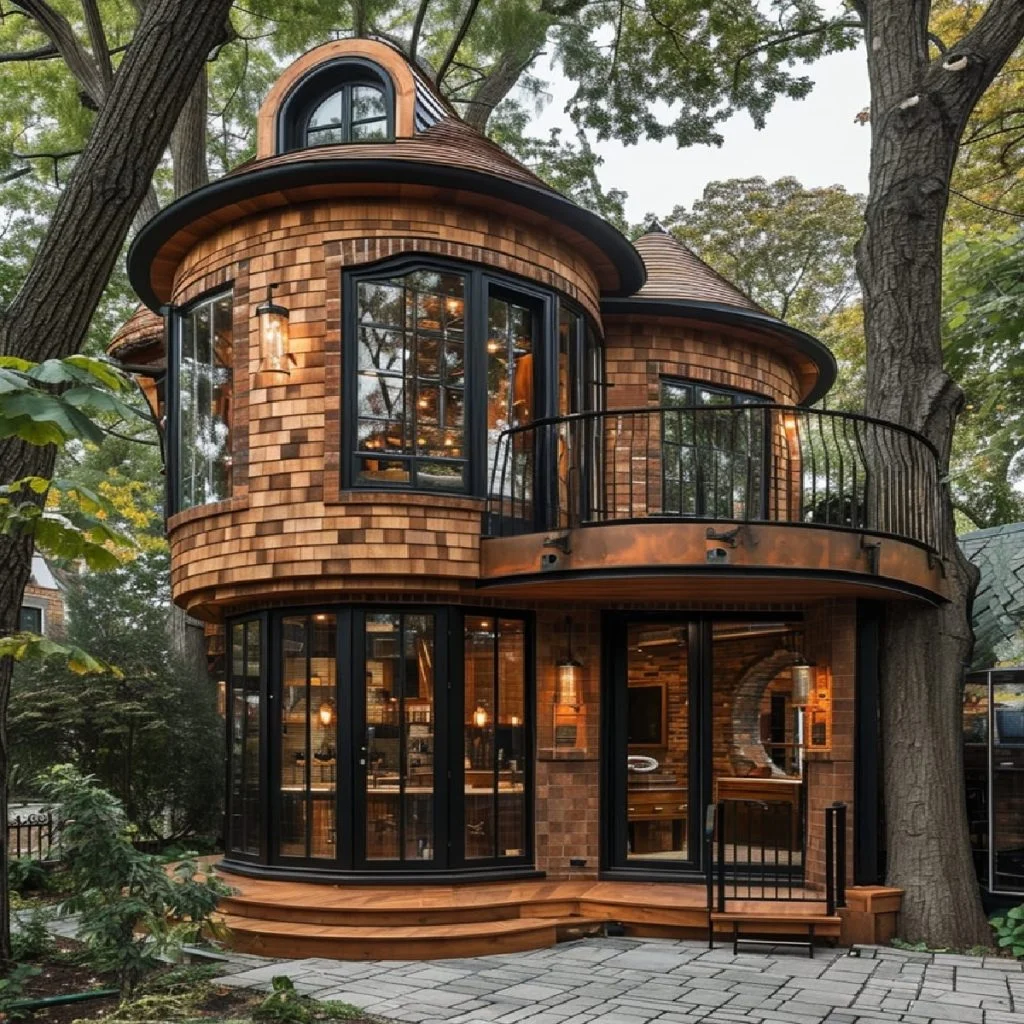As the demand for sustainable housing continues to grow, wooden houses are emerging as a leading choice for environmentally conscious homeowners. Combining renewable materials, energy efficiency, and aesthetic appeal, wooden homes offer a sustainable alternative to traditional construction methods. They are not just a nostalgic nod to the past but a progressive solution for addressing modern environmental challenges. Here’s why wooden houses are poised to become the future of green living.

1. Renewable and Sustainable Materials
Wood is one of the most sustainable building materials available. As a renewable resource, it can be harvested from responsibly managed forests, where trees are replanted to maintain ecological balance. Certification programs like the Forest Stewardship Council (FSC) ensure that the wood used in construction comes from sustainable sources.
Additionally, the production of wood has a significantly lower carbon footprint compared to materials like concrete and steel, which require energy-intensive manufacturing processes. By using wood, builders and homeowners can reduce greenhouse gas emissions and contribute to global sustainability efforts.
2. Carbon Sequestration and Climate Benefits
One of the unique benefits of wooden houses is their ability to store carbon. Trees absorb carbon dioxide during their growth, and this carbon remains locked in the wood throughout its lifecycle. By using wood as a primary construction material, homes become carbon sinks, actively helping to offset emissions from other sources.
This ability to sequester carbon makes wooden houses a practical solution for combating climate change, aligning with global efforts to reduce carbon footprints.
3. Energy Efficiency and Thermal Performance
Wood’s natural insulating properties make wooden houses highly energy-efficient. Unlike concrete or steel, wood minimizes heat transfer, helping to maintain a comfortable indoor temperature. This reduces reliance on heating and cooling systems, leading to lower energy consumption and reduced utility bills.
Modern wooden homes often incorporate additional energy-efficient technologies, such as solar panels, triple-glazed windows, and airtight construction. These features further enhance their eco-friendly credentials, making them ideal for green living.
4. Aesthetic and Architectural Flexibility
Wooden houses offer unmatched versatility in design, blending seamlessly with natural surroundings. From rustic log cabins to sleek, modern architectural marvels, wood can be used to create homes that suit various tastes and climates. Its natural warmth and texture provide a timeless aesthetic appeal, fostering a sense of connection with nature.
Moreover, wooden homes can be prefabricated, reducing waste and construction time. Prefabrication not only makes wooden houses more cost-effective but also minimizes environmental impact during the building process.

5. Health Benefits of Living in Wooden Houses
Wooden houses contribute to a healthier indoor environment, aligning with biophilic design principles that emphasize the human-nature connection. Wood naturally regulates humidity levels, reducing the likelihood of mold and improving indoor air quality. Additionally, living in a wooden home can have psychological benefits, promoting relaxation and reducing stress through its natural aesthetics and tactile appeal.
6. Durability and Longevity
Advances in wood treatments and construction techniques have significantly improved the durability of wooden houses. Modern wooden homes are resistant to pests, moisture, and fire when properly treated. Regular maintenance, such as sealing and staining, ensures that these homes can last for generations, making them a sustainable long-term investment.
7. Contribution to Circular Economy
Wooden houses support the principles of a circular economy by using renewable materials and generating minimal waste. At the end of their lifecycle, wooden components can often be repurposed or recycled, unlike concrete or steel, which may contribute to landfill waste. This sustainability further reinforces their appeal as the future of green living.
Conclusion
Wooden houses are more than just a trend—they are a sustainable, energy-efficient, and aesthetically pleasing solution to modern environmental challenges. By combining renewable materials, advanced energy-saving features, and timeless design, wooden homes embody the principles of green living. As the world continues to prioritize sustainability, wooden houses are poised to play a pivotal role in shaping the future of eco-friendly housing.
